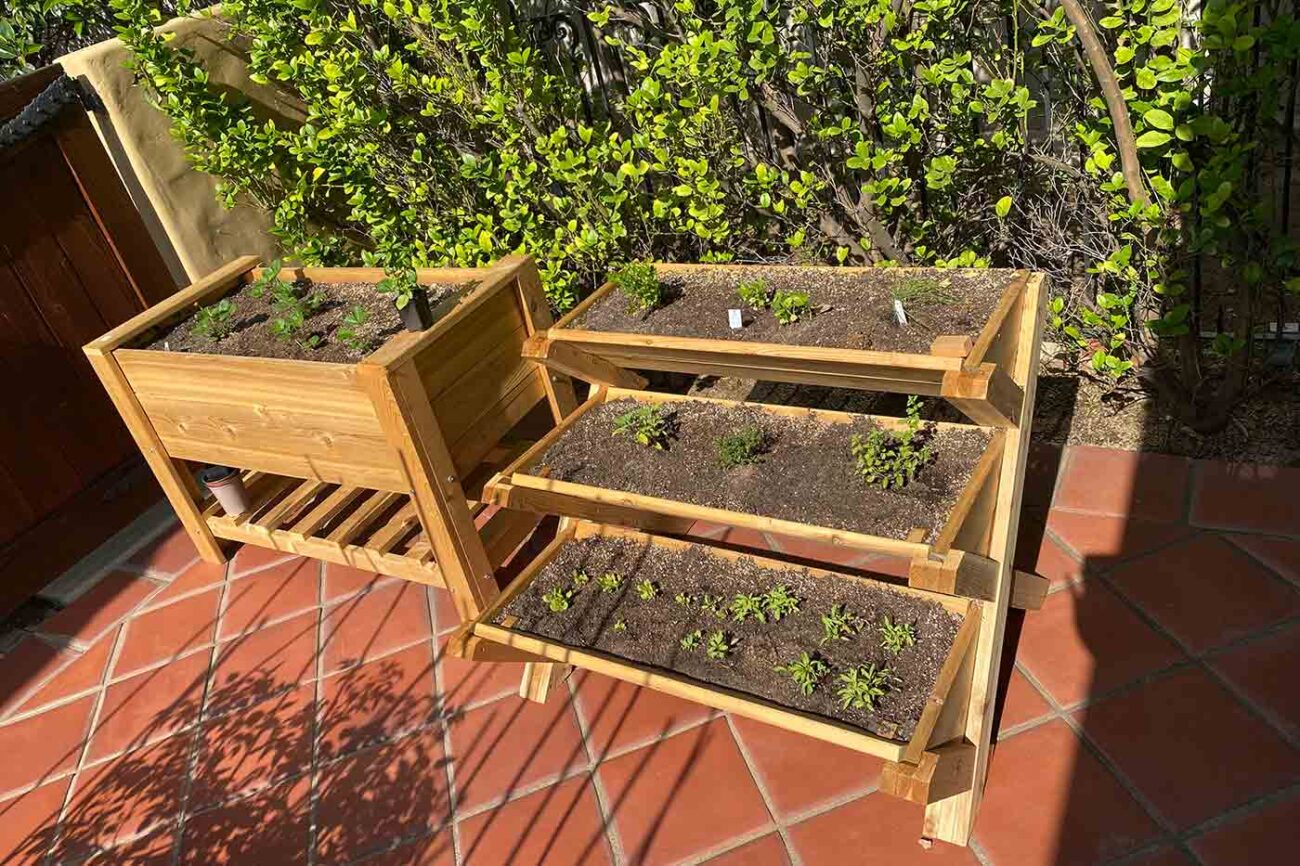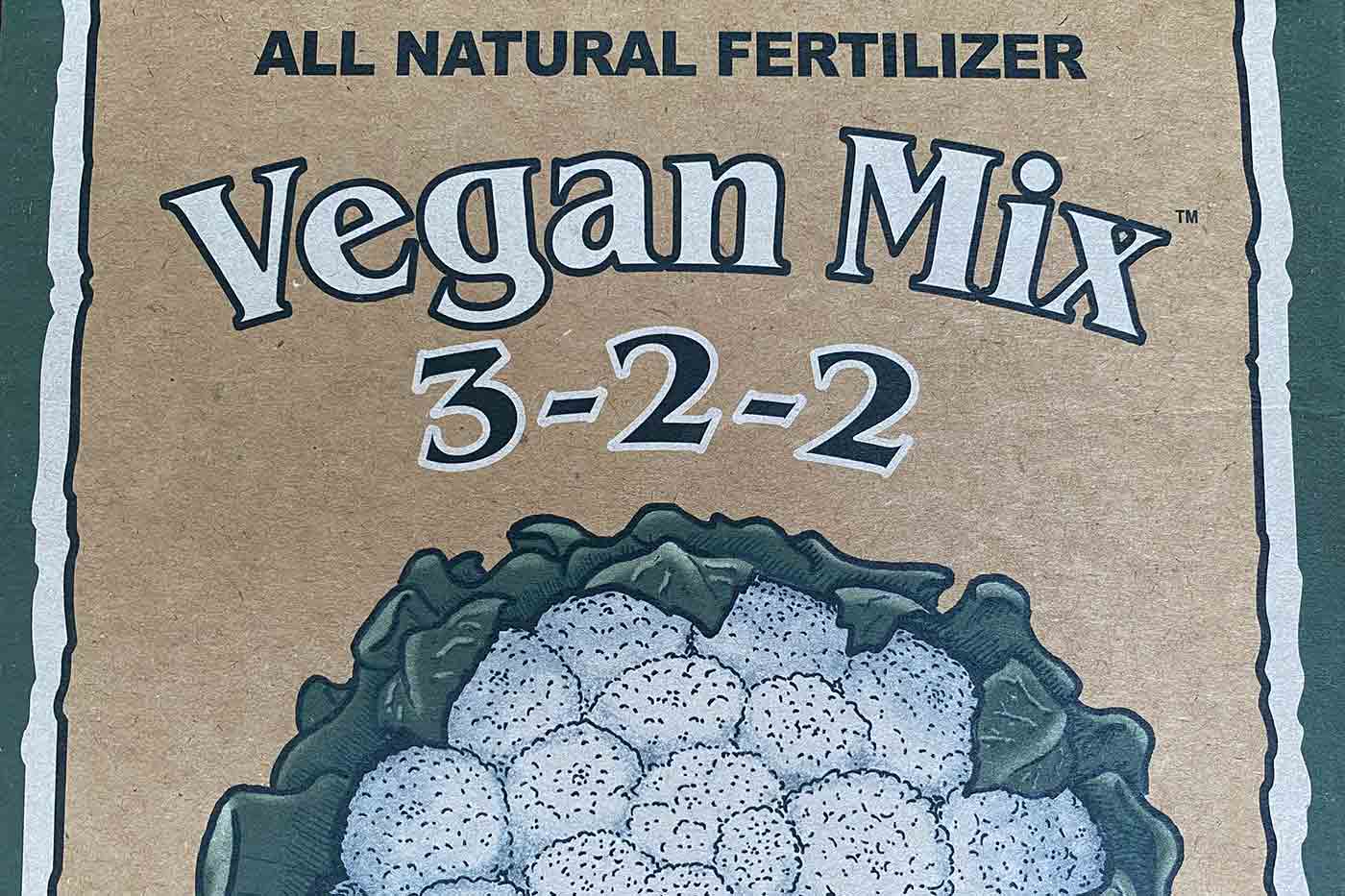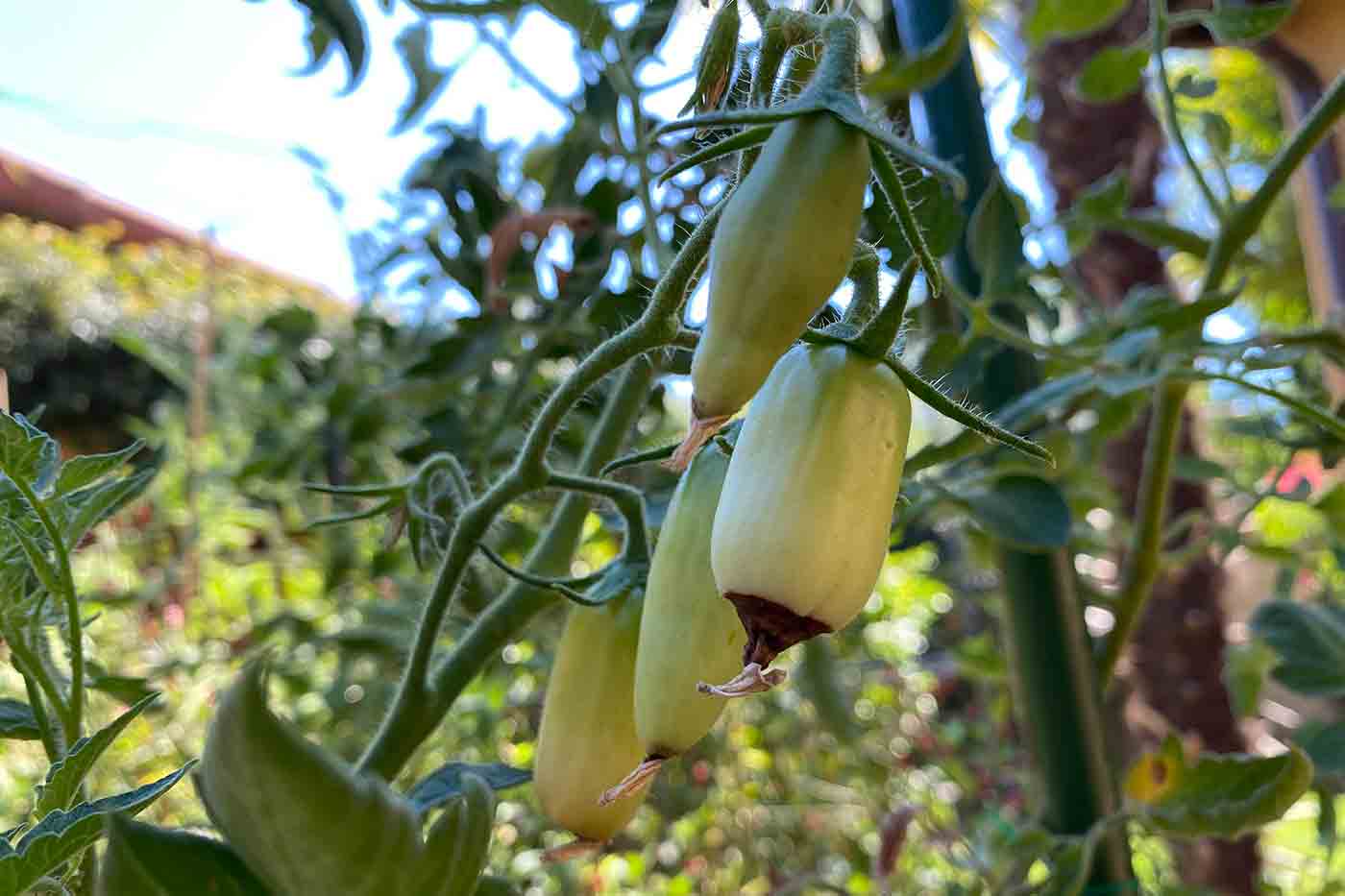
Vegan Fertilizer Tips to Help Your Garden Grow
There is plenty of vegan fertilizer on the market that can help you grow gorgeous flowers and luscious veggies and fruit without adding “bone meal,” “liquid fish,” or “manure” to your soil.
Finding vegan fertilizer is easy—some are made from plants, others are nutrients made from chemicals. Experts say both can have a role to play in healthy gardens, depending on personal preference.
You can also make your own recipes, but that can sometimes require more lead time.
Before you plant, it is helpful to take a moment to understand the basics of plant nutrition and the labeling on fertilizer packaging. If you stick with gardening, you'll learn a bit more with each planting, and there is plenty to learn about growing plants.
Have you ever wondered what those three hyphenated numbers on your fertilizer label like the one below actually mean? Well, they stand for the three major nutrients your plants need most: nitrogen (N), phosphorus (P) and potassium, aka potash (K). Always in that order. If there's a fourth number it stands for sulfur (S).
The label below for vegan fertilizer made by Down To Earth with the 3-2-2 translates to 3% nitrogen, 2% phosphorus and 2% potassium. The rest of the mix, available on amazon, is compost.
This vegan fertilizer blend also includes other plant micronutrients not standard on labels: 4% calcium, 1% magnesium, plus 2.5% humic acid, which may help break down these organic nutrients faster so that plants can absorb more sooner.

Here's how the different components work and why it's important to use enough but not too much:
Nitrogen (N) helps plants grow, especially early on, boosting leaf development and helping them take on a deep green color. It is the nutrient most likely to be missing from your soil and needs to be added each year since rain tends to rinse it away. Without enough, leaves turn yellow and drop off. Plants need nitrogen when they first start growing but can't absorb it towards the end of the season.
You can also have too much of a good thing. Food production companies have been adding more fertilizers over the years to increase yields, more than plants can actually use. Runoff from excess nitrogen fertilizer contributes to global warming and ocean “dead zones.”
At home, too much nitrogen can push plants to grow too many leaves and not enough fruit or to get overly tall and. It can make its way into your local water table if you really go overboard.
Phosphorus (P) helps plants flower and grow fruit, vegetables and strong roots. Insufficient amounts can stunt growth and dull leaves.
Potassium or potash (K) increases resistance to disease, heat and cold. Without enough, your plants flower and fruit less and have weak stems. Too much, and you can get burned leaf tips. You can get it from wood ash, aka burned wood, or grass clippings.
You can buy nutrients individually in case you find you need one or two more than the others (some people test their soil), but in general it can be helpful to use them in combination for better absorption. Fertilizer can also contain other nutrients, macronutrients and more.
Some fertilizer blends are labeled for specific types of plants, but most important is fertilizing often enough, but not too often. The balance isn't critical. You do want to make sure that your soil is not too acidic or basic. For this reason, it is worth avoiding applying a fertilizer made for a plant that needs acidic soil like a rhododendron or azalea on other plants.
What's more, with a lot of plants, you don't need to fertilize at all. With vegetables and fruits such as growing tomatoes, however, its is worth watching closely and keeping up with feedings. If you've already improved your ground over time with nutrient-rich compost, fertilizer and other amendments in years past, it may need less help. If you're using fresh, unfertilized potting soil, you'll need to start from scratch.
Some vegan fertilizers are organic, produced from plants, some are synthetic, meaning they are nutrients manufactured and sold just for your garden, like vitamin pills—in powder, slow-acting pellet, or liquid form. The source and form of fertilizers makes no difference to your plants, say university experts.
Some gardeners hate to use chemical fertilizers instead of organic substances from plants or animals, but according to Oregon State, plants can benefit just fine from either. Some gardeners say it is ideal to use a combination of both.
You have less control and certainty with organic products. For example, compost made from broken down plant materials is an excellent soil amendment, and it can contain the essential nutrients. But without testing, it is impossible to know whether your compost has enough nutrients for your plants. Often the concentration is low so that you will also need to add fertilizer vegetable plants and the like.
Organic fertilizers can take longer to break down so they are ready to release nutrients that can be absorbed by plants, and they can degrade. You may need to add the first organic fertilizer treatment weeks before you actually plant, according to The California Garden Web operated by the University of California.
On the plus side, there is less risk of damage from over fertilizing like with a quick fast dose of a chemical fertilizer. It's important to pay attention to dosages with chemical fertilizers to avoid having your plants OD on nutrients, causing leaf burn or worse.
One compromise some gardeners choose is a slow-release chemical fertilizer that feeds plants for months. It allows you to get nutrients added to the soil at the roots after you've planted. And the nitrogen is less likely to run off into your ground water at the end of the season, a risk in some areas if you've applied too much too quickly.
Your soil also needs macronutrients. You can add gypsum if your soil is low in calcium, which can contribute to problem called end rot, such as the brown on the San Marzano in the image below.


